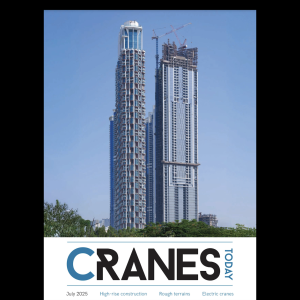The company said that its European business created a foundation for this growth. The main markets in Western Europe remained strong, and the trend towards higher performance classes and fitting variants – reinforced by the increase in fields of applications – continued in 2007. In addition, the company said it was “extraordinarily successful” in capitalising on the developments in its promising markets in Eastern Europe, in particular Russia, as well as Central and South America.
The US, where slightly under 5 percent of the Group’s revenues are generated, was affected by the real estate and financial crises and by the weakness of the US dollar against the Euro and also against the Canadian dollar, but the effects were more than compensated by the strong European markets.
Demand for products during the period under review resulted in a continued scarcity of capacities and a tight materials supply situation. This led to longer delivery times and delayed the impact of passing on increased raw material prices to the market.
Although measures such as the deployment of additional suppliers started to become effective during the year, bottlenecks in material and component supply still occurred. For this reason, Palfinger not only faced increases in material prices, but also higher contract-awarding costs in order to work to capacity. The increase in personnel capacities required for capacity expansion posed another growing challenge.
In 2006 Palfinger started its largest-ever investment programme, which provides for investments in capacity expansion and in the further improvement of efficiency and quality in the total amount of around EUR 80 million by the end of 2008. A subsequent second extension programme for the years 2008 to 2010 was approved in autumn 2007 in order to take into account the continuously growing global market demand and to shorten delivery times drastically in the future. By the end of the year 2007 the first measures were reflected in a capacity increase of 10 to 15 percent as compared to the same period in 2006. Another increase by around 10 percent as compared to the end of 2007 is planned by the end of 2008, the company said.
In addition, Palfinger supported its growth strategy with acquisitions: Croatian company PiR metal d.o.o., a steel component manufacturer, in which the Company had held an interest since 2001 and taillift manufacturer MBB Liftsystems AG. In September a distribution joint venture agreement was entered into with one of the leading automobile trading companies in India, Western Auto L.L.C. Dubai.
In order to be able to meet the increased demands on the basis of the Palfinger value-creation strategy and handle the increase in capacities, Martin Zehnder was appointed to the Management Board with effect as of 1 January 2008. As COO he is responsible for the entire production area.
Assets and Finances
Business development in the 2008 financial year will furthermore, to a large extent, be characterised by the implementation of the investment programme currently underway, aiming at raising capacities while at the same time maintaining and enhancing quality. The second investment programme, which was adopted in the third quarter 2007, will entail a further expansion of production facilities by 2010.
For the years to come Palfinger proceeds from the assumption of a continued strong market environment, with partially weaker markets being compensated by the strongly growing markets in Eastern Europe. This is the basis on which, from 2008 onwards, the company will be placing its strategic focus increasingly on the development and expansion of areas and product divisions of strategic importance. To this end, Palfinger will set up a separate business segment referred to as Ventures.






